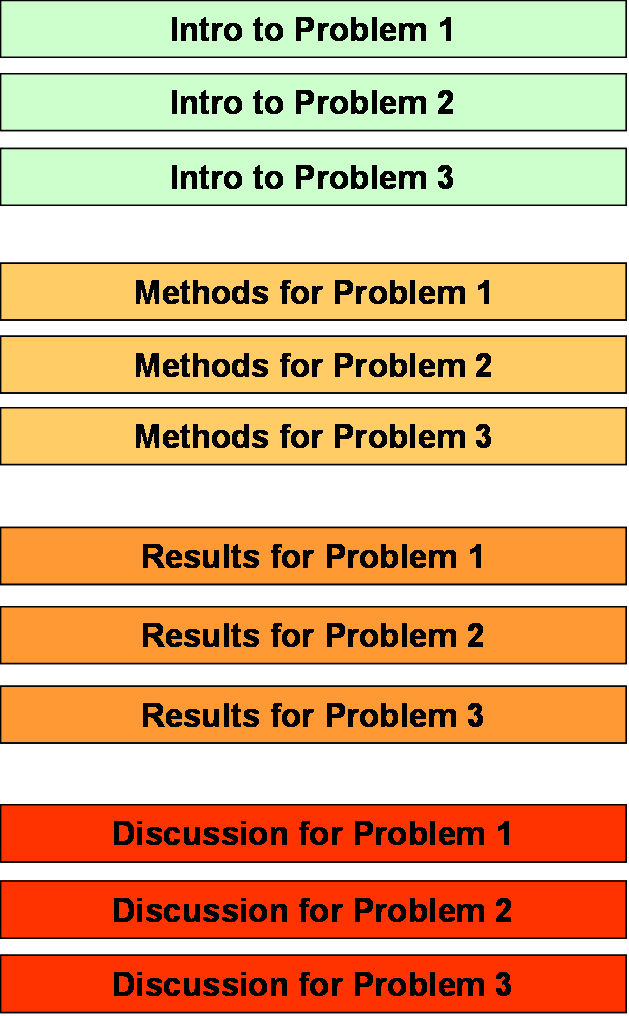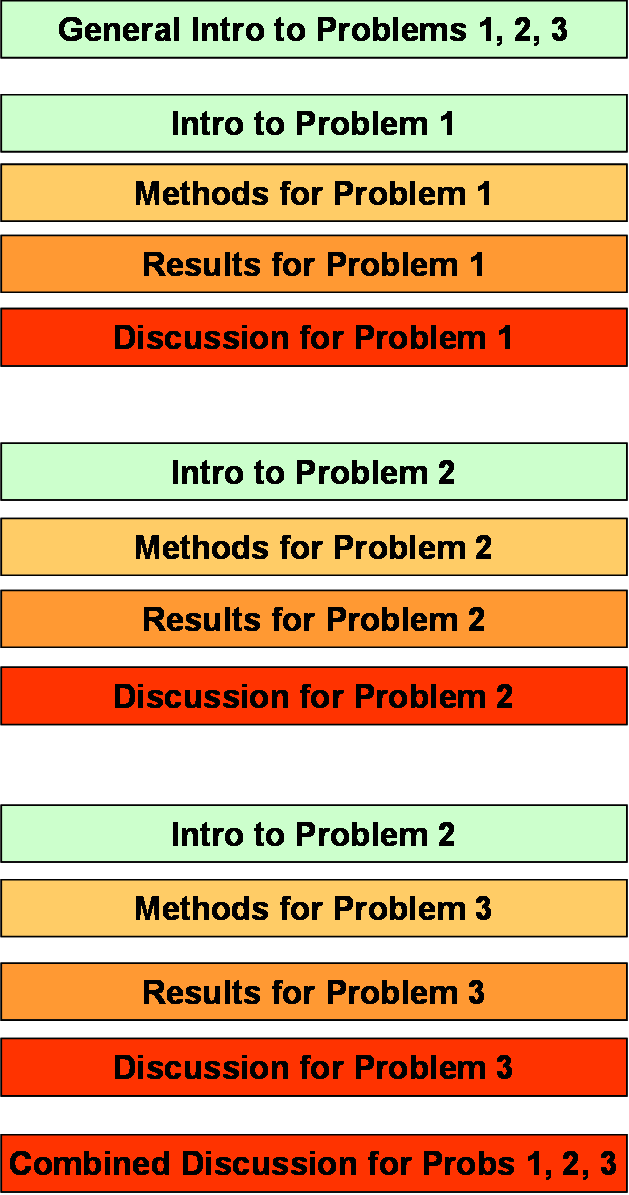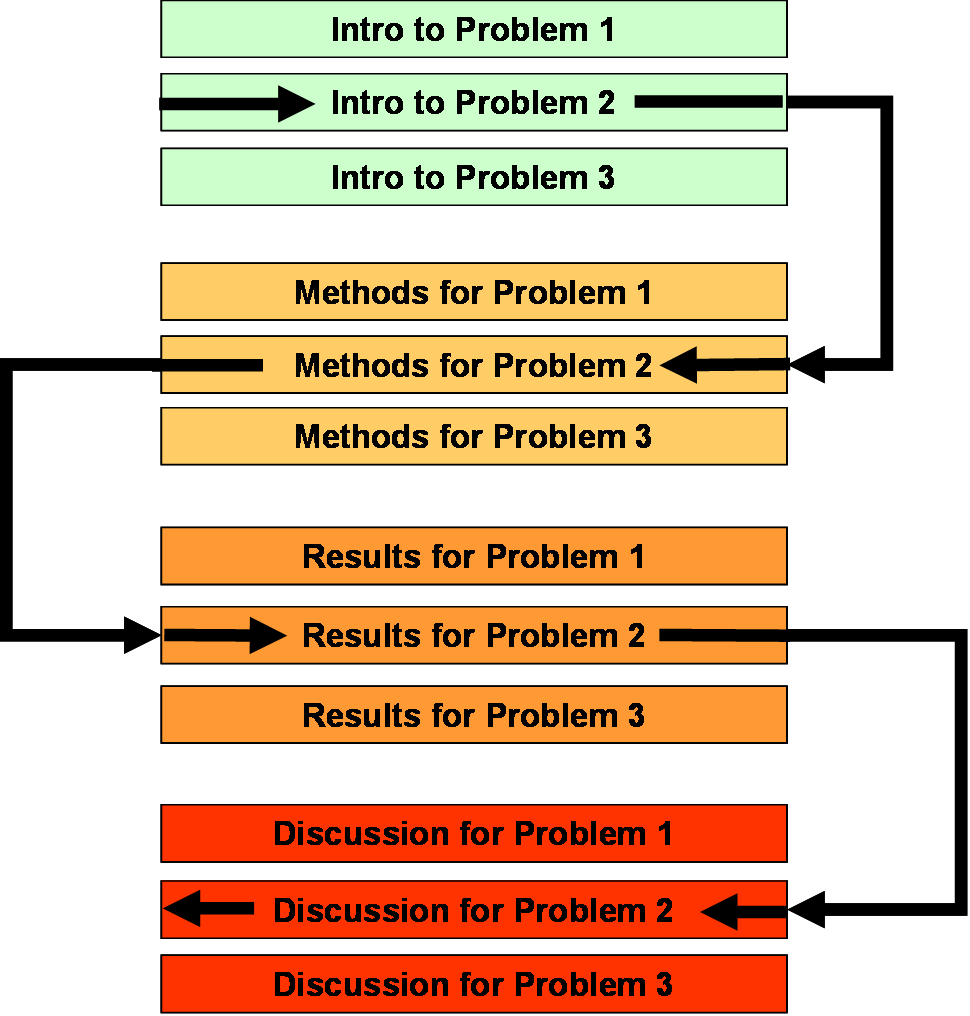The Science Of Scientific Writing Set E Scientific Sections Methods: Frame of Reference + Elaboration Methods: Coherence Exercise 1 Final Page .
OVERVIEW: The way to well-written science
PART I: Paragraphs and Sentences
SET A: Paragraphs: The Maps Behind Them
SET B: Paragraphs: Using Maps to Meet Readers' Expectations
SET C: Paragraphs with Something Extra: Points and Tails
SET D: The Generic Section: Expectations and Maps as Blueprints
SET E: Scientific Sections: The Methods and Results
SET F: Scientific Sections: The Discussion
SET G : Scientific Sections: The Introduction
SET H : Sentences
SET I : The Paper as a Whole
PART II: The Paper and its Sections
SET 1: Argument Parts
SET 2: Indicator Words
SET 4: Locating Arguments in Prose
SET 5: Rationale's Essay Planner
SET 6: Evidence in Arguments: Basis Boxes
Synthesis 1: Position-Early Paragraphs
Synthesis 2: Position-Final Paragraphs
Synthesis 3: Writing a Discussion I
Synthesis 4: Writing a Discussion II
Set E: Methods and Results
Preamble: The sections of a scientific paper (IMRAD): the costs and benefits
In Set D we looked at what I called the generic section; in Set E we will begin to look at the sections of scientific paper, and we will focus in particular on those that report what the authors did: The Methods and the Results.
The great majority of research papers published today have four major sections (the "IMRAD" format), called most typically:
- Introduction
- Materials and Methods
- Results
- Discussion
The sequence in the list above is also the most common, but occasionally the Methods section occurs at the paper's end, rather like an appendix. The IMRAD structure evolved during the twentieth century, at varying paces in different disciplines. In the medical literature for example it only became the most common pattern during the 1960s, according to a study by Sollaci and Pereira in 2004. Citing work by AJ Meadows, they suggest one main driver for the popularity of this format, which was itself a consequence of the increased amount of reading required of researchers:
"The IMRAD structure facilitates modular reading, because readers usually do not read in a linear way but browse in each section of the article, looking for specific information, which is normally found in preestablished areas of the paper."
When we were considered the generic section we saw that readers have two main expectations:
- The section will have an early Frame of Reference section (with a Framing Sentence for the section as a whole), followed by an Elaboration, and optionally, one or more concluding (and/or Coda-like) paragraphs
- The section will be coherent, partly by virtue of:
- having one dominant (core) purpose (description/report, argument, explanation) which is not overwhlemed by any non-core content
- having paragraphs with Framing or Point Sentences, which, considered together, tell a coherent story
The specialised structure of the scientific paper has had an impact on both of these expectations, leading to a weakening of the first expectation in some sections, and greater difficulties in meeting the second throughout the paper. On the rest of ths page we will look at why it can be so difficult to achieve coherence.
The sections of a scientific paper often need to tell more than one story
The compartmentalisation of the scientfic paper, and the modular reading habits of the audience, present particular challenges which are not encountered in writing a non-compartmentalised "generic" section that is read in linear fashion. If you do not rise to these challenges, you risk making information retrieval from your paper particularly difficult. To understand these challenges let us consider a paper which addresses three related, but nevertheless distinct, problems (not an uncommon situation). The paper will have a grouping structure with some similarities to that shown in the diagram below:

Now while many researchers would probably agree that the progression:
Introduction - Materials and Methods - Results - Discussion
is consistent with the "natural" flow of thinking about, and communicating, science, that is probably only true when we are dealing with a single problem. To get some sense of how unnatural the above schema is, imagine you have to tell a friend about some problems you have with him: you would not bring them all up at once, and expect them to be dealt with all in one go. You would proceed one issue at a time.
Likewise a more natural progression for the paper we are considering might look something like the one below.

(Note: in my workshops on seminar presentation I recommend this or a similar structure since it is my experience that the audience is more comfortable with linear rather than modular organisation.)
The main challenge of the sections of a scientific paper : maintaining the threads
By comparing the two diagrams above, you should be able to appreciate that the central organisational challenge of a multi-problem scientific paper is how to keep the elements of each problem's thread (or story) connected in the reader's mind, even if the elements of any one thread are likely to be "sharing space" with unrelated content (see diagram below).

Sometimes the threads you will need to "maintain" will not link back to an individual problem defined in the Introduction. For example, you may have a single-problem paper, but that one problem is addressed by a number of methods, each with its own block of results, each perhaps requiring its own block of discussion. The "threading challenge" is a general one that applies to most scientific papers.
The threading challenge is in reality a trans-section problem, and thus is more accurately a problem at the level of the paper as a whole. I have introduced it now so you will understand understand the importance of the section-level strategies that will be suggested in this and the following sets. At the level of the section the threading challenge can be reduced to this:
Given that any one section is likely to be composed of both conjunct and disjunct story elements, how do we help the reader decide where one thread ends and the another begins?
Other challenges related to sections
As we look at each section, we consider ways to answer questions that often dogs scientific writers early in their careers, e.g.
- What content goes in which section?
- What level of detail is required?
Other features expected of specific sections
For the most part we will only be considering structural expectations of section writing. There are many specific, often discipline-particular, expectations that will not be covered here. Most resources on scientific writing, both books and websites, tend to focus on these aspects, and should be consulted in conjunction with this course. For example, a good online resource for writing papers for biology-related journals (particularly for the Methods and Results sections) is this:
How to Write a Paper in Scientific Journal Style and Format
......